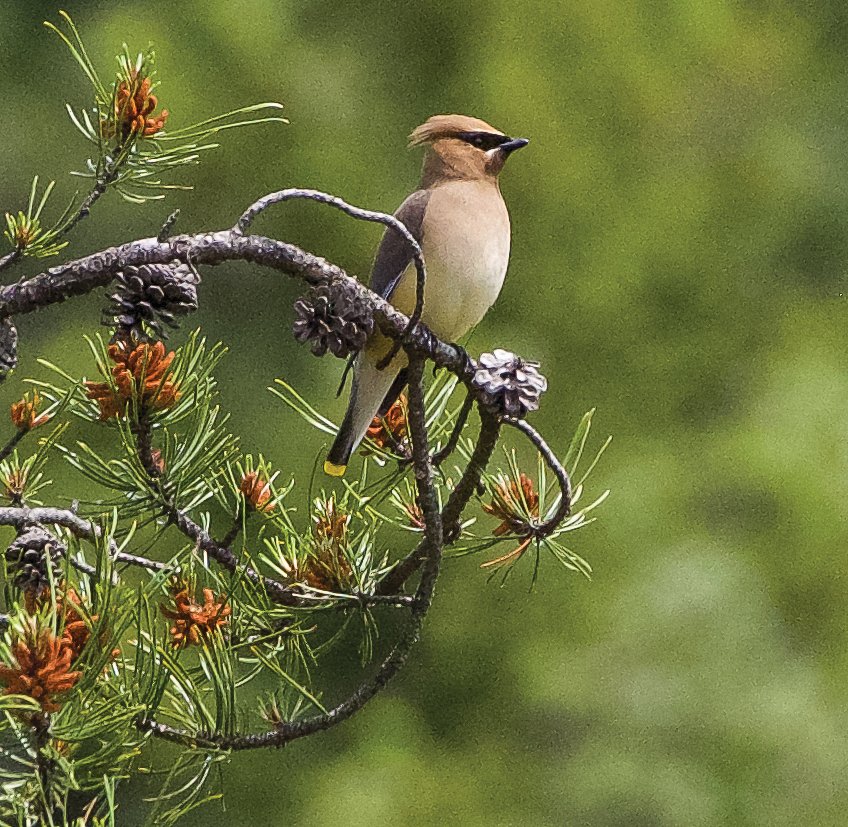Before returning home to the Olympic Peninsula for the long days of summer, I pause to reflect on my two-month sojourn in the northern Rocky Mountains of Idaho.
Just this week, the mercury …
This item is available in full to subscribers.
We have recently launched a new and improved website. To continue reading, you will need to either log into your subscriber account, or purchase a new subscription.
If you had an active account on our previous website, then you have an account here. Simply reset your password to regain access to your account.
If you did not have an account on our previous website, but are a current print subscriber, click here to set up your website account.
Otherwise, click here to view your options for subscribing.
* Having trouble? Call our circulation department at 360-385-2900, or email our support.
Please log in to continue |
|

Before returning home to the Olympic Peninsula for the long days of summer, I pause to reflect on my two-month sojourn in the northern Rocky Mountains of Idaho.
Just this week, the mercury climbed into the high 70s. The long days of summer invite us to be outdoors, gardening, biking, boating, birdwatching, connecting with nature. Here I share the highlights...
Spring migration has brought diverse and colorful travelers, from warblers and waxwings, to swallows and swifts, to flycatchers and finches. Sandpoint is a small town, set on the shore of massive Lake Pend Oreille (pronounced Ponderay), surrounded by mountain ranges and rural land. After a rainy spring, pastures, forest edges, and wetlands are bustling with insects, worms, and spring buds, attracting various members of the “Blackbird” family, including blackbirds, cowbirds, meadowlarks, jays, crows, and ravens. I enjoy watching their social behaviors and hearing their vocalizations. I’ve also loved watching the ducks, geese, herons, and especially the graceful ospreys swooping down over the lake to grab a fish to feed their hungry nestlings.
Today, while I was looking up at the chattering swallows that float and dart on the morning breeze, a small falcon (probably a kestrel) cruised by at falcon speed, allowing me briefly to admire its perfectly streamlined wings and tail. Less spectacular, but a first for me, was a rather inconspicuous, dark gray bird whose nearly continent-wide range stops short just east of the Cascades: the catbird. With imagination, the bird’s voice can sound like a “mee-ou.”
My favorite pond in town is surrounded in thick foliage, and rich in bird life. Of all the different birds I’ve seen here in north Idaho, I think my highlight was the magnificent male Bullock’s Oriole, whose striking orange-black-and-white color combination reminds me of a Bengal tiger’s.
I recognized its familiar call, but it took persistence and patience to get a glimpse, since this bird is a master at hiding in the foliage (like a tiger).
For families with kids, Sandpoint’s City Beach is the place to play, get wet, and picnic in summer.
But, everyone paused their sand play to marvel at a very large flotilla (250-plys birds) of Canadian Geese swim by: the ever-vigilant adults leading their fluffy goslings for an afternoon tour. Remarkably, the geese were unflustered by a child skipping rocks nearby.
Outside of town, where meadows meet woods, small bands of wild turkeys ramble and rest. On my way back through Eastern Washington, I’ll be on the lookout for the magpies, those delightful characters with their long tails swinging in the breeze. As the inland temperatures soar, it will be refreshing to spend summer along the Salish Sea once again!
Summer officially begins on the Solstice (literally sun standstill”), this year June 21, when the sun reaches its northernmost position over the Tropic of Cancer (23 degrees N).
I’m always amazed at how far north of west the sun actually sets in summer. We are rich in daylight — some 16 hours of it each day, and our internal clock gets recalibrated to the long days and short nights.
Arising early, awakened by the light and the songs of birds, thankfully my day often includes a sensible nap in mid-afternoon. The birds also seem to quiet down then, perking up again just before sundown, sharing a cheery song or enjoying a family soirée for flying insects before nightfall. Kah Tai Lagoon is a great place to watch the evening swarms of fly-catching swallows and waxwings.
I’m looking forward to “messing about” on the water this summer, and re-reading the book “Wind in the Willows” while laying in my hammock.*
My daughter and I have a summer tradition to paddle and camp out on Marrowstone Island.
In my youthful mind, I’ve set an ambitious goal, to finally paddle the entire way from Brinnon to Port Townsend; taking a few leisurely days to do it, of course.
It’s the journey, as much as the destination. I’m sure there will be some dawn starts, some sunset paddles, and of course, mid-day naps! Happy summer to all!
*The Water Rat’s well-known quote: “Believe me, my young friend, there is nothing – absolutely nothing – half so much worth doing as simply messing about in boats. Simply messing...”
To see photos, listen to recorded songs, and learn more about the birds, check out allaboutbirds.org, and of course visit the site of our local Audubon chapter, admiraltyaudubon.org.
To view an easy-to-use page of when and where the sun rises, and sets, go to timeanddate.com/sun/usa/port-townsend?month=6&year=2022.
(Gary Eduardo Perless is the education director with Admiralty Audubon Society. Contact him at gperless@gmail.com.)